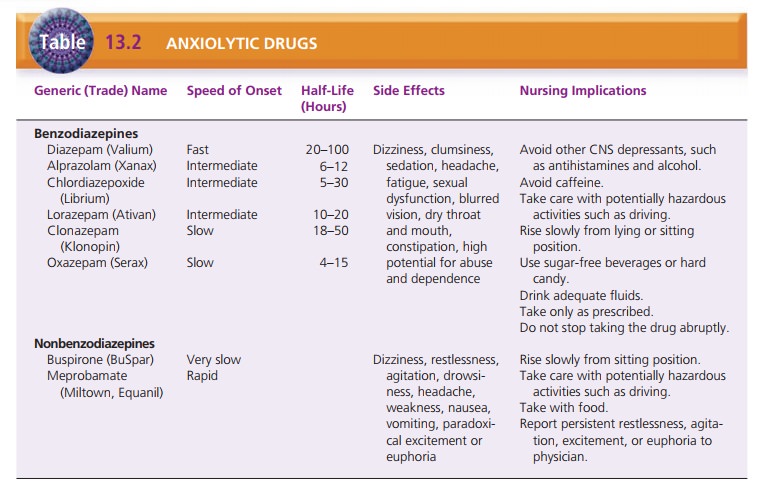Chapter: Psychiatric Mental Health Nursing : Anxiety, Anxiety Disorders, and Stress-Related Illness
Working with Anxious Clients
Working with Anxious Clients
Nurses encounter anxious clients and families in a wide variety of situations such as before surgery and in emergency departments, intensive care units, offices, and clinics. First and foremost, the nurse must assess the person’s anxiety level because that determines what interventions are likely to be effective.
Mild anxiety is an asset to the client and requires no direct intervention. People with mild anxiety can learn and solve problems and are even eager for information. Teach-ing can be very effective when the client is mildly anxious.
In moderate anxiety, the nurse must be certain that the client is following what the nurse is saying. The client’s attention can wander, and he or she may have some difficulty concentrating over time. Speaking in short, simple, and easy-to-understand sentences is effective; the nurse must stop to ensure that the client is still taking in information correctly. The nurse may need to redirect the client back to the topic if the client goes off on an unrelated tangent.
When anxiety becomes severe, the client no longer can pay attention or take in information. The nurse’s goal must be to lower the person’s anxiety level to moderate or mild before proceeding with anything else. It is also essential to remain with the person because anxiety is likely to worsen if he or she is left alone. Talking to the client in a low, calm, and soothing voice can help. If the person cannot sit still, walking with him or her while talking can be effective. What the nurse talks about matters less than how he or she says the words. Helping the person to take deep even breaths can help lower anxiety.
During panic-level anxiety, the person’s safety is the pri-mary concern. He or she cannot perceive potential harm and may have no capacity for rational thought. The nurse must keep talking to the person in a comforting manner, even though the client cannot process what the nurse is saying. Going to a small, quiet, and nonstimulating envi-ronment may help to reduce anxiety. The nurse can reas-sure the person that this is anxiety, that it will pass, and that he or she is in a safe place. The nurse should remain with the client until the panic recedes. Panic-level anxiety is not sustained indefinitely but can last from 5–30 minutes.
When working with an anxious person, the nurse must be aware of his or her own anxiety level. It is easy for the nurse to become increasingly anxious. Remaining calm and in control is essential if the nurse is going to work effectively with the client.
Short-term anxiety can be treated with anxiolytic medications (Table 13.2). Most of these drugs are benzo-diazepines, which are commonly prescribed for anxiety. Benzodiazepines have a high potential for abuse and dependence, however, so their use should be short-term, ideally no longer than 4 to 6 weeks. These drugs are designed to relieve anxiety so that the person can deal more effectively with whatever crisis or situation is caus-ing stress. Unfortunately, many people see these drugs as a “cure” for anxiety and continue to use them instead of learning more effective coping skills or making needed changes.

Related Topics